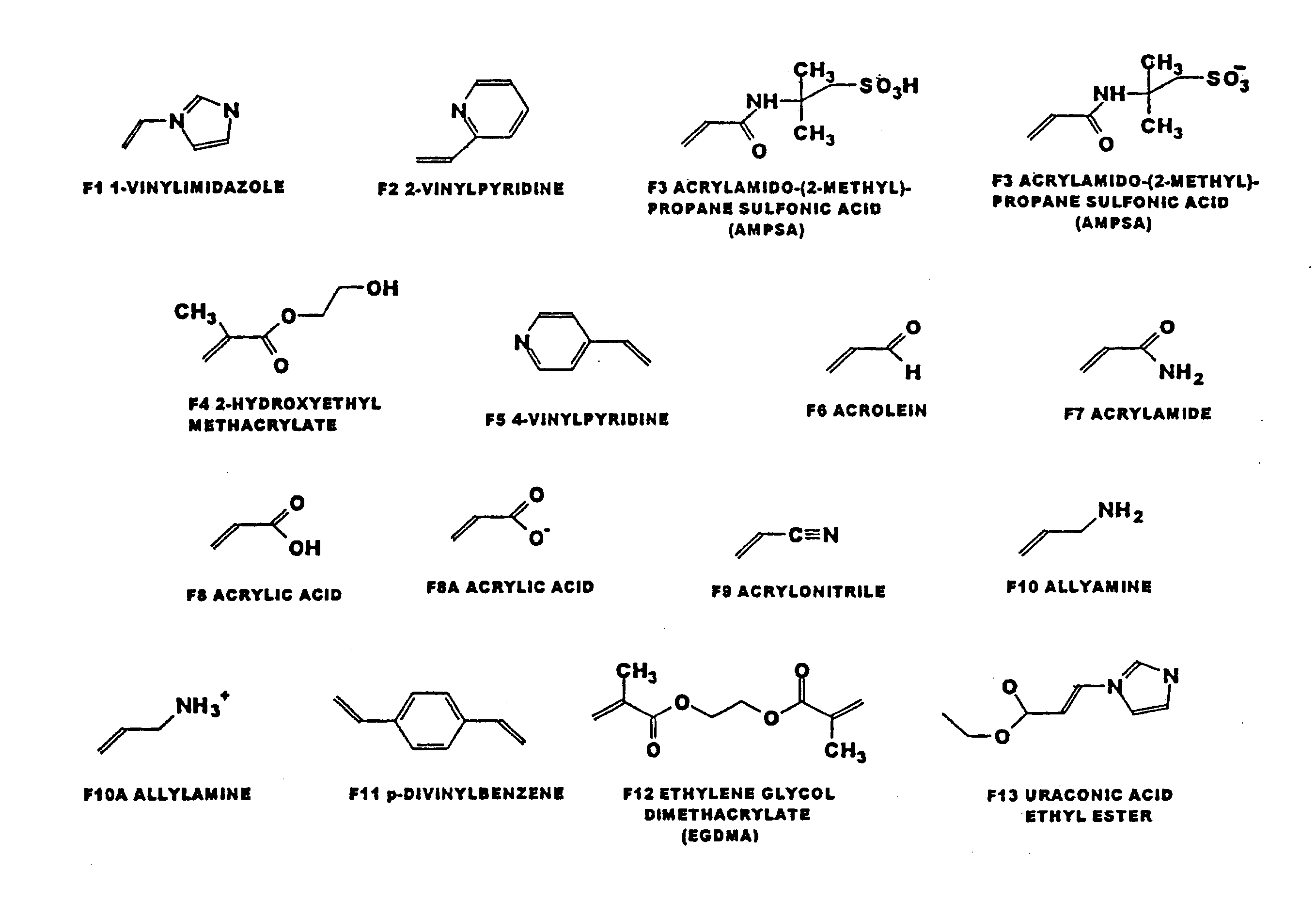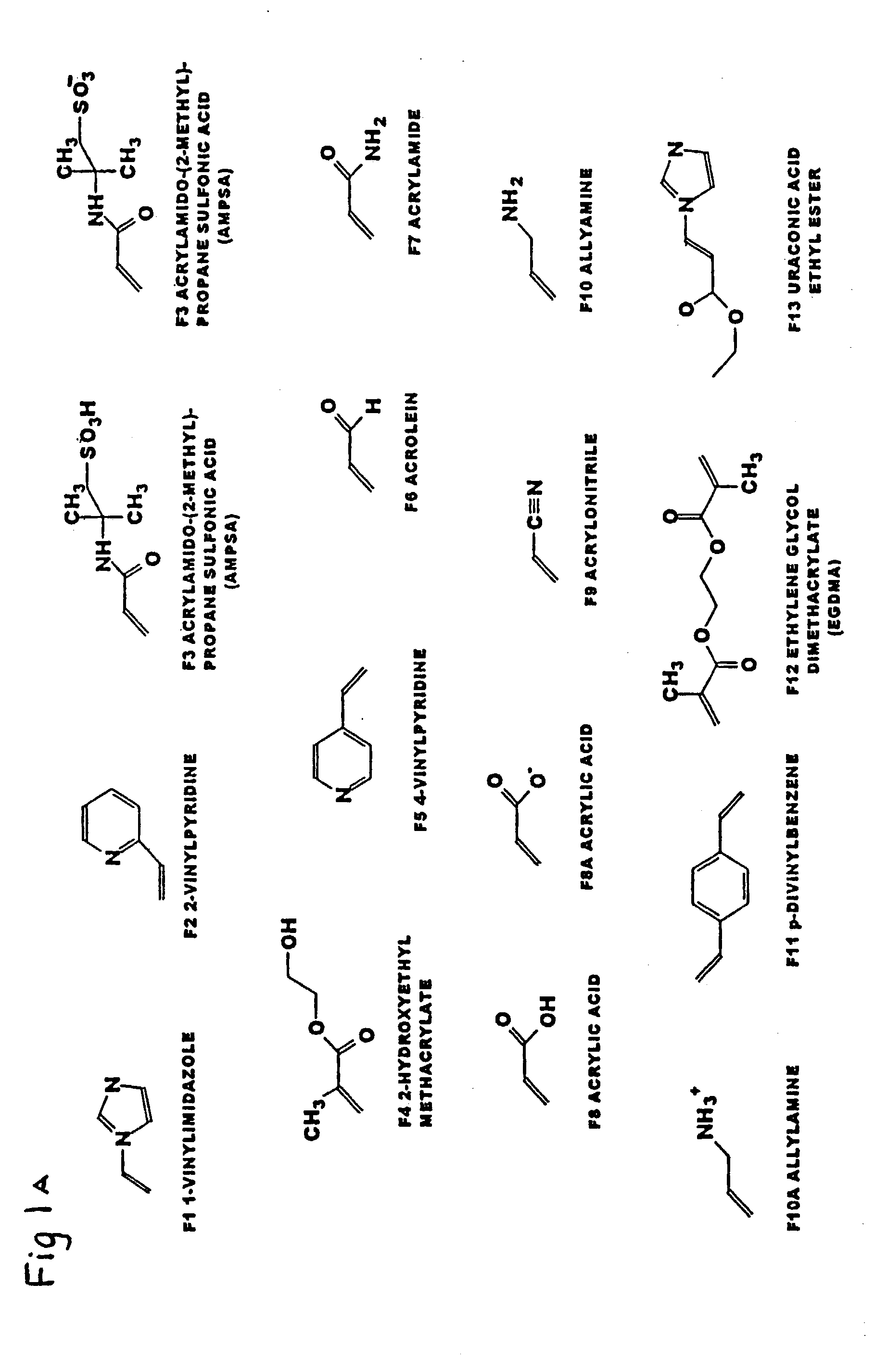Molecularly imprinted polymer
a technology of imprinted polymer and imprinting, which is applied in the field of molecular imprinting polymer, can solve the problems of lack of general procedure for polymer synthesis and practicability, and achieve the effect of rapid development and optimization
- Summary
- Abstract
- Description
- Claims
- Application Information
AI Technical Summary
Problems solved by technology
Method used
Image
Examples
first embodiment
[0020] The first embodiment describes the design of a virtual library of functional monomers which possess polymerizable residues and residues, able to interact with a template through electrostatic, hydrophobic van-der-Waals forces, dipole-dipole interactions or reversible covalent bonds. The library of functional monomers should contain at least two, and preferably more monomers which can be vinyl monomers, allyl monomers, acetylenes, acrylates, methacrylates, amino acids, nucleosides, nucleotides, sugars and saccharides, carbohydrates, phenols, heterocycles, aniline, and their derivatives. Preferable monomers are these able to interact with the template through non-covalent interactions and be polymerized through a radical mechanism.
second embodiment
[0021] The second embodiment describes the design of a molecular model of the template using molecular mechanical methods. The template is selected from a group including biological receptors, nucleic acids, immunosuppressants, hormones, heparin, antibiotics, vitamins, drugs, cell components and components of viruses such as carbohydrates, lipids, saccharides, nucleoproteins, mucoproteins, lipoproteins, peptides and proteins, glycoproteins, glucosaminoglycanes and steroids.
third embodiment
[0022] The third embodiment describes screening the virtual library of functional monomers for their ability to form a molecular complex with the template. The monomers giving the highest binding score represent the best candidates for polymer preparation and can be used directly for the polymer synthesis as part of a monomer mixture.
PUM
| Property | Measurement | Unit |
|---|---|---|
| pH | aaaaa | aaaaa |
| particle size | aaaaa | aaaaa |
| particle size | aaaaa | aaaaa |
Abstract
Description
Claims
Application Information
 Login to View More
Login to View More - R&D
- Intellectual Property
- Life Sciences
- Materials
- Tech Scout
- Unparalleled Data Quality
- Higher Quality Content
- 60% Fewer Hallucinations
Browse by: Latest US Patents, China's latest patents, Technical Efficacy Thesaurus, Application Domain, Technology Topic, Popular Technical Reports.
© 2025 PatSnap. All rights reserved.Legal|Privacy policy|Modern Slavery Act Transparency Statement|Sitemap|About US| Contact US: help@patsnap.com



